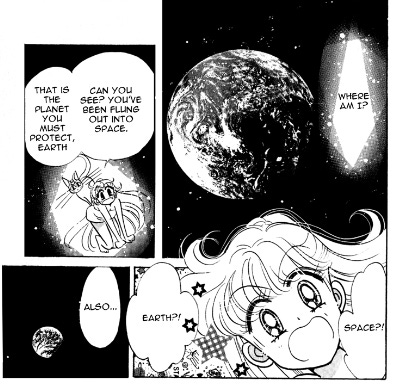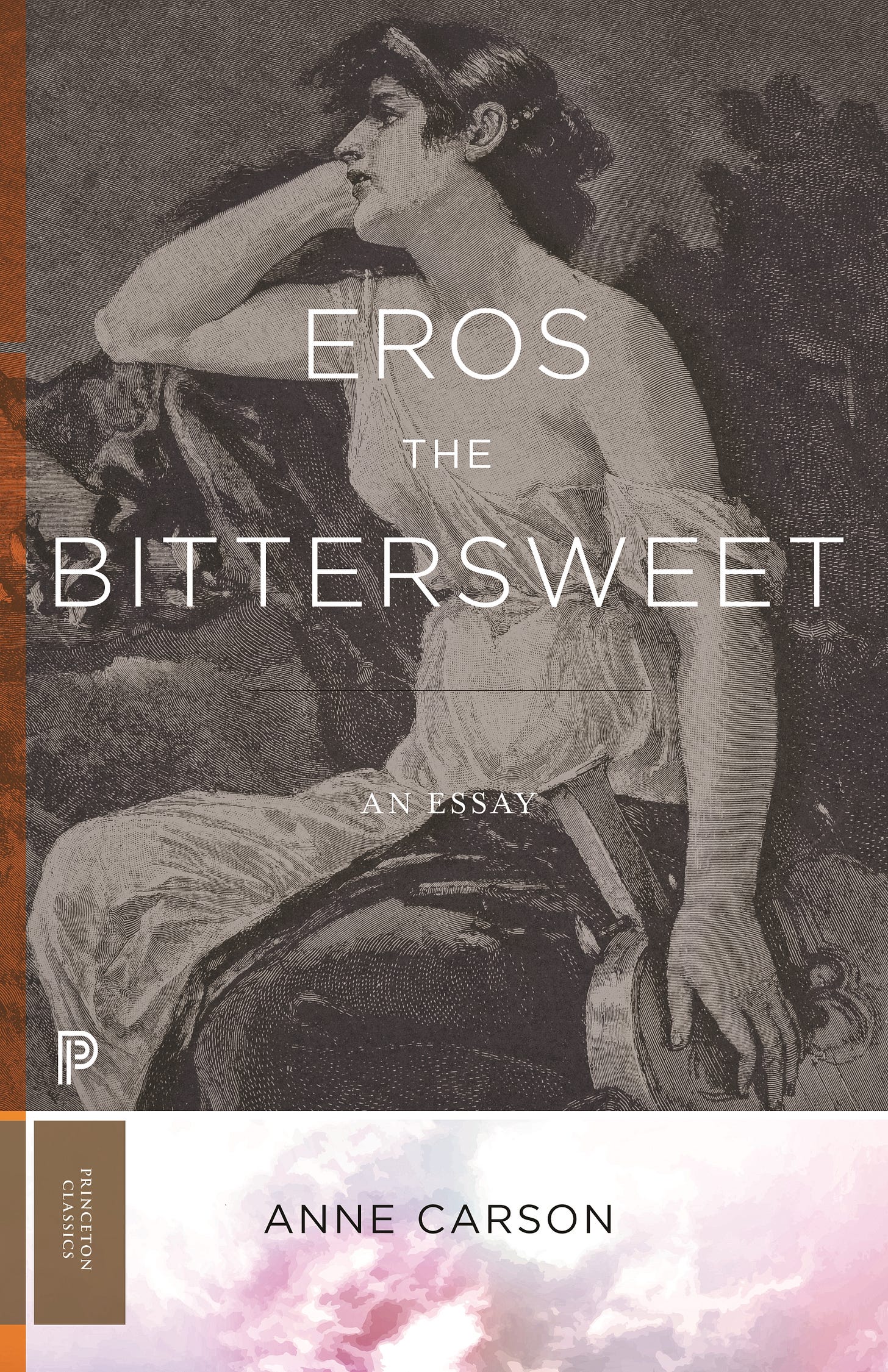Sappho Meets Sailor Moon
The boundary-snapping work of R. Sikoryak fuses poetry with comic books and their heroes
You’re reading a guest post on PopPoetry by Laura Eppinger. Laura Eppinger (she/they) knows that the Jersey Devil is real. Laura’s work has been nominated for a Pushcart Prize as well as Best of the Net. Learn more at lauraeppinger.blog.
Every entry in R. Sikoryak’s comic book series Masterpiece Minicomics (tagline: Where classics and comics collide!) is worth a read. Entries include Walt Whitman drawn in the style of Marvel Comics and illustrations of the poetry of Emily Dickinson drawn in a cozy mystery setting of an old Gothic manor. The most recent comic in this series is Sappho: Pretty Poet, in which the ancient Greek poet is drawn like the world-famous manga superhero Sailor Moon, the creation of Japanese manga artist Naoko Takeuchi.
Fear not, fellow feminists: Sikoryak isn’t reducing the poet to her surface features. Sailor Moon sometimes uses the title “The Pretty Guardian,” so in this world, Sappho is “The Pretty Poet.”
Sappho Sketches
Sappho, the lyric poet from 700 B.C.E., is famous for writing about loving women and beauty, though much of her original work has been lost. Largely what we can read today are fragments of what we assume are longer poems.
The five Sappho fragments illustrated in this comic by R. Sikoryak are:
“Hymn to Aphrodite,” translated by Edwin Marion Cox, and illustrated to portray a visit from this goddess of love to the poet/Sailor Guardian Sappho.
“The Lesser Lights Among the Moon,” translated by Edwin Arnold, is an almost-too-perfect bridge between Sailor Moon and Sappho: Sappho looks up at the moon with love and wonder.
“To An Uncultured Woman,” translated by John Addington Symonds, where Sappho grapples with the fact that even the most beautiful, beloved woman will one day die. But in this representation, Sappho experiences both regret and surprise with Sailor Moon’s emotive face.

“A Girl in Love,” translated by Thomas Moore, portrays Sappho as too distracted by love and desire to work her loom or do any housework. Sappho’s tantrum on the floor is exactly what Usagi, a.k.a. the teen girl alter ego of Sailor Moon, would do if she were too lovesick to complete her chores.

“One Girl,” translated by Dante Gabriel Rossetti, presents an image rich in double entendre: the speaker muses about the apple on the highest bough of a tree, which is desired most even though (or because) it is unattainable. This post will explore the queerness of both texts, offering one way to interpret this image of the unattainable desire.
The Sailor and the Poet of Love: A Perfect Pairing
We don’t have any historical record suggesting that Sappho was a clumsy teen who loved snacks and her pet cat Luna. Still, both Sailor Moon and Sappho look in wonder at the moon, surround themselves with a band of girls and young women, and value romantic love so much that they make it their life’s work. (One fights villains in the name of the moon to protect love, and the other composed poetry about love and lovers that has intrigued readers for thousands of years.)
It’s also worth noting that I can read both Sailor Moon manga and the poetry fragments of Sappho because these works have been translated. Both texts come to the English-speaking world from different languages and cultures. Thank you to the translators of the world!
That said, even when these works are rendered in English, there may be some deeper philosophies or cultural scripts that I wouldn’t understand right away. Last year I read all of the essays in Eros the Bittersweet by Anne Carson just to better understand one single Sappho line. The ancient Hellenic concepts of frigid indifference and hot, flexible, flowing love were at work in Sappho’s image of “love, loosener of limbs,” and I’d had no idea!
The 1990s Sailor Moon animated series was the first anime I ever watched, as an English-speaking white American kid with no idea that the show was originally made in Japan. My sister and I were so obsessed that we woke up at 6 a.m. on Saturdays to catch this airing on TV; still, we puzzled over some of the images that didn’t quite make sense to us. Sailor Moon loves food, but we often didn’t recognize what she was eating. The 1990s dubbed version of this anime translated rice balls as “donuts,” but our kid brains knew that those weren’t donuts!
But these small moments of confusion never stopped us from loving Sailor Moon. We felt a connection to other essential parts of the story and its characters anyway. Illustrations help! In this way, Sikoryak’s Sappho: Pretty Poet serves as a bridge to understanding, sometimes pointing to a visceral emotion or reaction, superseding a need for concepts to be spelled out in words. When both Sailor Moon and Sappho are drawn as experiencing lovesickness, boredom, and enthusiasm, they feel like real people. They feel like friends.
Finally, these two texts are alike in their queerness. There are also parallels in the efforts to obscure or suppress that queerness.
In her time and in the centuries after her death, Sappho’s lines were frequently referenced and praised for being the standard for lyric poetry (poems set to music). Also after death: The poet herself was derided, supposed to be a prostitute because of her deep knowledge of seduction, or presumed to be a stereotypical resident of the allegedly-promiscuous island of Lesbos. After antiquity, the empire of Christianity hid or destroyed manuscripts of Sappho’s poetry after deeming it sinful. Later still, scholars of the Victorian era rediscovered Sappho but went to great lengths to excuse or ignore the fact that a woman was writing sensual, sexual, and romantic poetry to and about women.
It may be too heavy-handed to say that some Sailor Moon characters have “Sapphic vibes,” but the vibes were always there. In later series, Sailor Uranus and Sailor Neptune are openly in a romantic relationship, though this was censored or removed from the show in the 1990s. Enough hints and subtext were preserved, however, that a generation of readers and viewers picked up on the romance even if it wasn’t clearly stated. In the newest Sailor Moon content, queer relationships are explicitly named.
Sailor Moon comics and animation can be sweet or silly, but they always defend the power of love. Sikoryak’s representation of Sappho in the style of Takeuchi’s Sailor Moon makes this poet from antiquity feel young and new, reminding us of the timelessness of Sappho’s words. Sappho and Sailor Moon: the perfect match!







